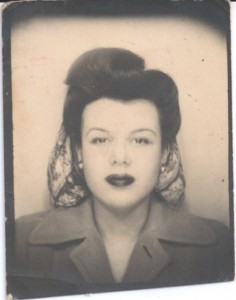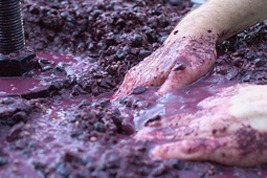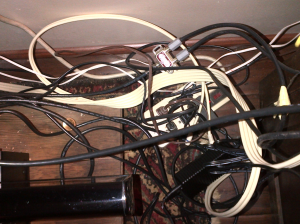In my last blog, I talked about my “hummingbird” approach to writing — all fits and starts and never letting yourself assume that you can only write when and if you have long, uninterrupted blocks of time. Yes, it works, but do I yearn for long, uninterrupted blocks? Of course!
A progress report. My current project, a novel about a Jewish-American woman born in 1918 and that follows her life for approximately 40 years, is actually taking shape. I’m about 130 pages into it and even though it’s mostly being writing under the constraints of my “hummingbird” method, things are starting to fall into place. I’m enjoying getting to know the protagonist, as well the other characters in her life, and look forward to each new, albeit brief, session.
 Because this novelis set in real places and at a real time in history, I needed to do a lot of basic research before
Because this novelis set in real places and at a real time in history, I needed to do a lot of basic research before
I ever wrote a word. But once I’d completed what I absolutely needed in the way of research, I had a choice: to either continue to research everything I possibly could or or to start writing and do
I love the research and could easily let it drag on for years and years and never actually start to write. Working as I do, when I come to a point in the story where research is essential, I either stop and do it on the spot or mark the passage and return to it later.research on the fly. I chose the latter.
Stay tuned.


 expend energy feeling resentful, stressed or conflicted, I let myself enjoy our family and friends and did what needed to be done to insure good summers for our students. In short, I did my best to stay “in the moment” and use whatever downtime I had not to write, but to think about writing. The result: we had a very enjoyable, relaxed summer and, truth be known, I wouldn’t have accomplished much even if I had fretted about it. This way, having thought about it but not having butted my head against a wall, I’m ready to go with a sufficiently clear idea of how to proceed. This summer taught me an important lesson. Now all I have to do is remember it!
expend energy feeling resentful, stressed or conflicted, I let myself enjoy our family and friends and did what needed to be done to insure good summers for our students. In short, I did my best to stay “in the moment” and use whatever downtime I had not to write, but to think about writing. The result: we had a very enjoyable, relaxed summer and, truth be known, I wouldn’t have accomplished much even if I had fretted about it. This way, having thought about it but not having butted my head against a wall, I’m ready to go with a sufficiently clear idea of how to proceed. This summer taught me an important lesson. Now all I have to do is remember it! Rather than bash my head against a wall, I’ve found that it’s better for me to simply stop working on the project that has me frustrated and set it aside to quietly “ferment” while I tackle something else.
Rather than bash my head against a wall, I’ve found that it’s better for me to simply stop working on the project that has me frustrated and set it aside to quietly “ferment” while I tackle something else.
